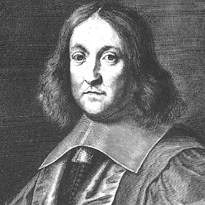 |
Fermat received a Bachelor of Civil Laws from the University of Law at Orleans in 1631. Fermat considered mathematics to be a hobby, never publishing his work. Most of his theories and formulations were recovered from his correspondence with Pierre de Carcavi and Father Mersenne. Upon his death his son Samuel oversaw the publications of Fermats work in Observations on Diophantus, and Mathematical Works.
Pierre de Fermat explored such mathematical areas as analytical geometry, pre-evolved Calculus, and infinite descent.
However his work with Number Theory is what he is best known for. A few of his well known theorems include Every non-negative integer can be represented as the sum of four or fewer squares A prime of the form 4n + 1 can be represented as the sum of two squares The equation Nx2 + 1 = y2 has infinitely many integer solutions if N is not a square Fermat was in the habit of presenting his theorems as fact, letting others perform the task of presenting the proofs and verifications of his work. Perhaps his most infamous work is what is commonly known as Fermat's Last Theorem, named such as it was the last of his theorems to be proven. This theorem states that xn + yn = zn has no non-zero integer solutions for x, y and z when n > 2. To further add to the mystery, Fermat's last words on this were found in the margin of a popular mathematics book, simply stating that he had found a "remarkable proof" but that the margin was too small in which to explain. In 1995, over 300 years later, this theorem was finally proven by the British mathematician, Andrew Wiles. Although once mistakenly declared deceased during the plague of 1653, he continued to live out his life in Toulouse with his wife and four children until his death in 1665. http://www.pbs.org/wgbh/nova/teachersguide/proof/ http://www.pbs.org/wgbh/nova/proof/wiles.html |